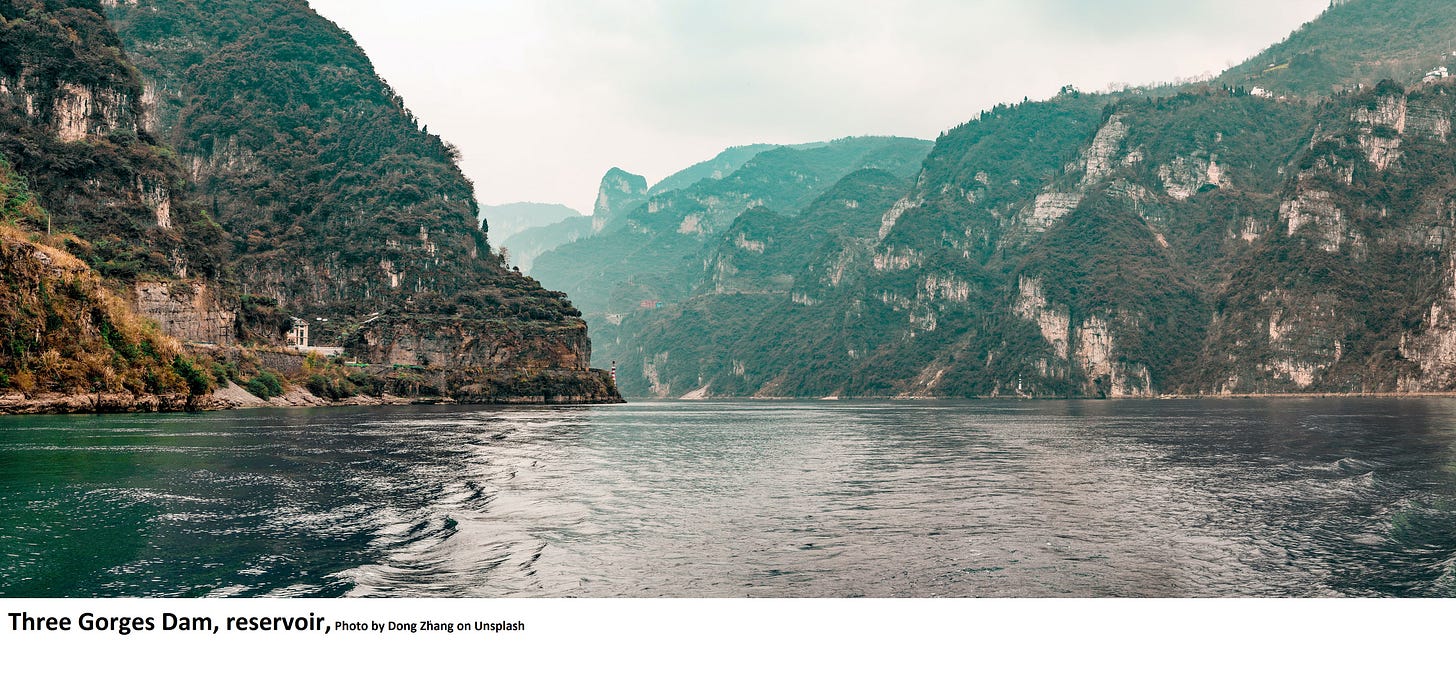Water in Geography: Human Disruption of the Hydrological Cycle and Flood Risk
The Dance of Water
The Hydrological Cycle: Nature’s Balancing Act
The hydrological (water) cycle is a continuous process that circulates water between the atmosphere, land, and oceans. This cycle involves key processes such as evaporation, condensation, precipitation, infiltration, runoff, and transpiration. It is fundamental for sustaining ecosystems, providing fresh water, and regulating climate.
However, human activities are increasingly disrupting this delicate balance, intensifying the frequency and severity of floods—events that can devastate communities, infrastructure, and natural environments.
How Human Activities Disrupt the Hydrological Cycle
1. Deforestation
Forests play a crucial role in intercepting rainfall, promoting infiltration, and reducing surface runoff. When trees are removed:
Rainwater is less likely to be absorbed by the soil.
Surface runoff increases, leading to higher river flows and downstream flooding.
Soil erosion is accelerated, further reducing the land’s ability to retain water.
Reference: World Resources Institute, 2023
2. Urbanisation
Urban growth replaces permeable soil with impermeable surfaces like concrete and asphalt:
Rainwater cannot infiltrate the ground, so it flows rapidly into drainage systems and rivers.
Urban areas often experience "urban heat islands," which can intensify local rainfall events.
The combination of rapid runoff and intense rainfall significantly increases flood risk.
Reference: United Nations Environment Programme, 2022
3. Agricultural Practices
Modern agriculture, especially monoculture and intensive tilling, exposes soil to erosion:
Sediment-laden runoff can clog rivers and streams, reducing their capacity to carry water.
Irrigation and drainage systems can alter natural water flows, sometimes increasing flood risk.
Reference: Food and Agriculture Organization, 2023
4. Water Management Infrastructure
Dams, levees, and channelization can:
Disrupt natural river flows and floodplain dynamics.
Increase flood risk downstream if structures fail or are overwhelmed.
Over-extraction of groundwater can cause land subsidence, making areas more prone to flooding.
Reference: International Water Management Institute, 2023
5. Climate Change
Human-driven climate change is altering precipitation patterns and increasing sea levels:
Warmer air holds more moisture, leading to heavier rainfall and more extreme weather events.
Rising sea levels and more intense storms increase the frequency and severity of coastal flooding.
Reference: Intergovernmental Panel on Climate Change, 2021
Amplified Flood Risks: Mechanisms and Impacts
Increased Flood Intensity
Faster surface runoff and reduced infiltration mean that rivers and streams can quickly reach and exceed their capacity, causing widespread inundation.
Flash Floods
Deforestation and urbanization can lead to sudden, localized floods with little warning, posing acute risks to life and property.
Coastal Flooding
Sea level rise, often compounded by land subsidence, makes coastal areas especially vulnerable to frequent and severe flooding.
Beyond Immediate Damage: Long-Term Consequences
Displacement: Floods displace millions, leading to humanitarian crises and long-term social disruption.
Food Security: Flooded farmland disrupts food production, threatening food supplies and livelihoods.
Ecosystem Damage: Floods can destroy habitats, reduce biodiversity, and impair ecosystem services such as water purification and carbon storage.
Economic Loss: Infrastructure damage, business interruption, and recovery costs place immense strain on economies.
Turning the Tide: Solutions and Adaptation
Nature-Based Solutions
Reforestation: Restores natural water absorption and reduces runoff.
Wetland Restoration: Wetlands act as natural sponges, absorbing excess water and reducing flood peaks.
Sustainable Agriculture: Practices like crop rotation, cover cropping, and reduced tillage improve soil structure and water retention.
Green Infrastructure
Permeable Pavements: Allow water to infiltrate urban surfaces.
Green Roofs and Parks: Absorb rainfall, reducing runoff and urban heat.
Improved Water Management
Integrated River Basin Management: Coordinates water use and flood control across entire watersheds.
Floodplain Restoration: Allows rivers to flood safely in designated areas, reducing risk elsewhere.
Climate Change Mitigation
Emissions Reductions: Slowing global warming helps stabilize sea levels and precipitation patterns.
Adaptation Planning: Building resilient infrastructure and early warning systems protects communities.
Conclusion
Human activities are profoundly altering the hydrological cycle, increasing flood risks and their devastating impacts. Recognizing these effects and investing in sustainable, adaptive solutions is essential for restoring balance, protecting communities, and ensuring a resilient future for both people and the planet.
References
Food and Agriculture Organization (FAO). (2023, September 29). Soil pollution: A hidden environmental and public health threat.
Intergovernmental Panel on Climate Change (IPCC). (2021, August 9). Climate Change 2021: The Physical Science Basis.
International Water Management Institute (IWMI). (2023, March 3). Managing floods and droughts in a changing climate.
United Nations Environment Programme (UNEP). (2022, June 7). Floods and Climate Change.
World Resources Institute (WRI). (2023, March 22). Deforestation & Water.
Sample Geography Examination Questions
Explain how urbanisation affects the hydrological cycle and increases flood risk.
(4 marks)Describe two ways in which deforestation can contribute to increased flooding.
(4 marks)Assess the effectiveness of nature-based solutions in reducing flood risk. Use examples to support your answer.
(6 marks)Discuss the role of climate change in altering global flood patterns.
(6 marks)Using a named example, explain how floodplain restoration can help manage flood risk.
(6 marks)








